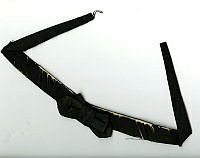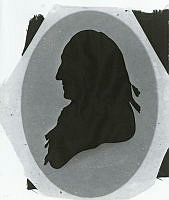George Washington, White House Collection
This cut paper silhouette on silk of President George Washington was created by an unknown artist in the early 19th century. This item was a gift to the White House by Mrs. Stanley M. Straus. Washington served as the Commander in Chief of the Continental Army during the American Revolution. He served as president from April 30, 1789 until March 4, 1797.







